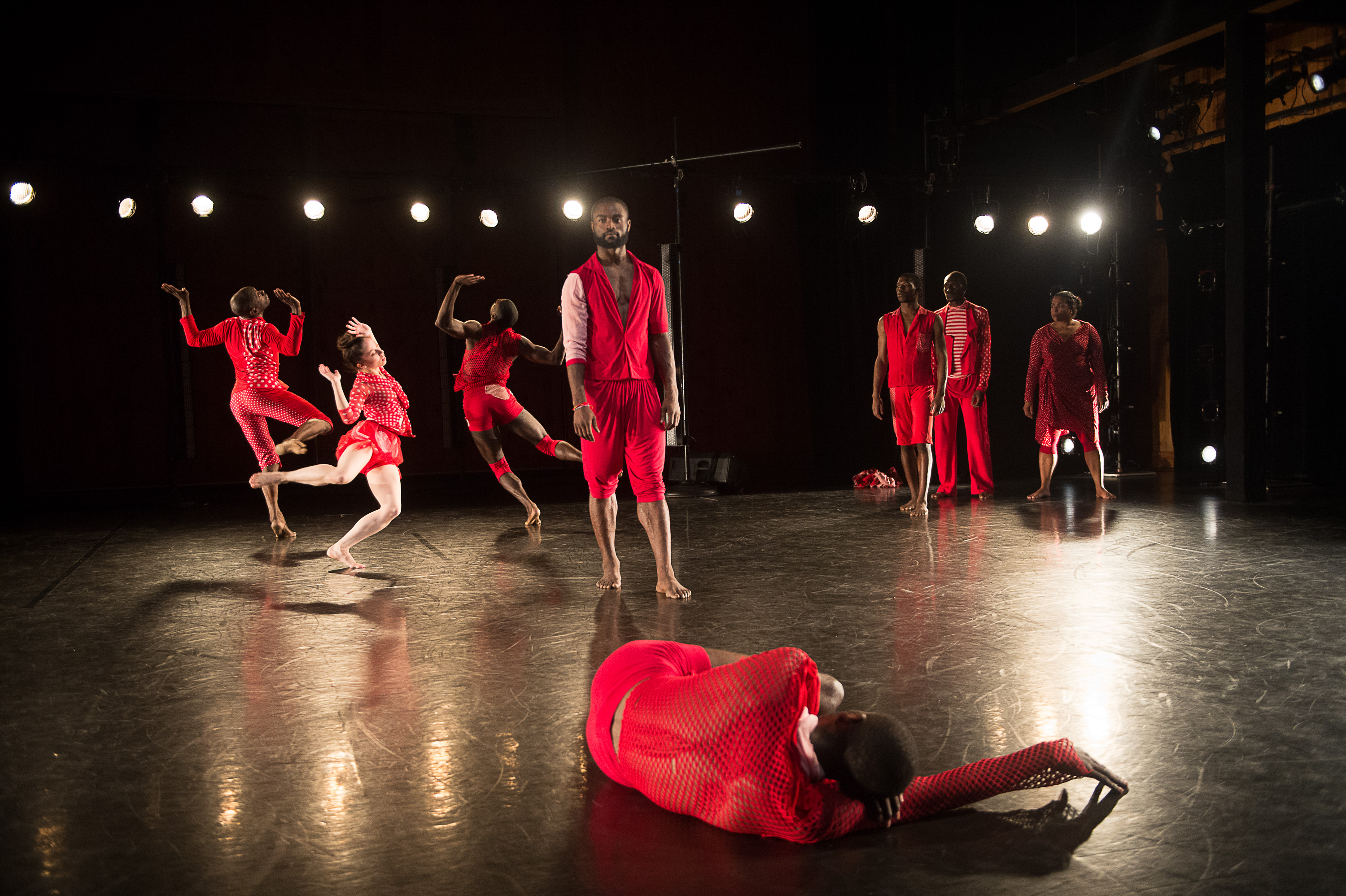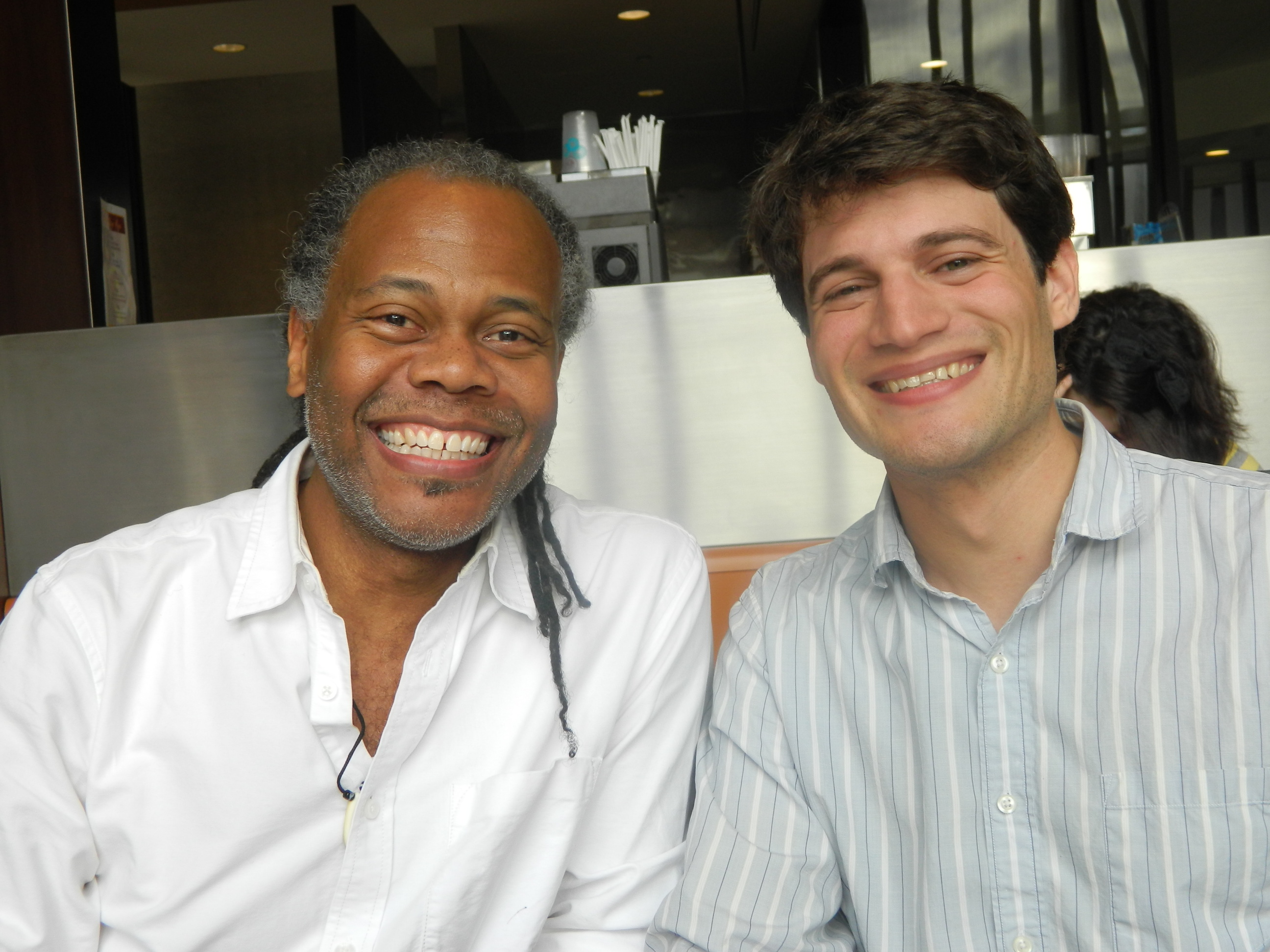Professor Jesse Wolfson walks the line between math and dance

A scene from a dance production where Wolfson sees math in the shapes the dancers make as they move across the dance floor.
Professor Jesse Wolfson of the UCI Department of Mathematics believes that math and dance, though seemingly disparate things, can, when combined, offer one another unique perspectives that can fuel creativity. His work with the choreographer Reggie Wilson featured in December’s "Notices of the American Mathematical Society," and in the article Wolfson and Wilson talk about how the two worked together to help choreograph fractals — or shapes that have repeating symmetry at different scales — as well as to dissect patterns formed from techniques in classical Shaker dances, and to teach middle schoolers about the ways math appears in dance.
In the article, Wolfson gives the rough definition that math is "a sustained exploration of our intuitions of [geometric] space and numbers and of how we make sense of them." In this way, math and dance overlap in how they relate to space; both deal with how geometric spaces and bodies move or transform, and how we make sense of such phenomena.
While calculus students may feel like they're just studying a lot of formulas and numbers, there's a lot of rich math in our natural intuitions of space. Wolfson points out that, in European mathematical history, a lot of early work was in understanding geometry. And beneath its complicated machinery, calculus mostly concerns itself with space. The derivative, for example, describes the inherent geometric properties of functions.
In Wolfson and Wilson’s first collaborative exploration of space, Wilson explored how fractal symmetries appear in African architectural patterns, and wanted to incorporate this into an African-inspired dance piece. Wolfson quickly became Wilson's "fractal consultant" for the piece Moses(es), and, despite Wolfson's lack of choreographic experience, he offered insights through a mathematical lens. This is exactly what Wilson was after, and it helped bring to life a fractal motif through the repetition of a specific pattern of movement at different scales in the dance production.
Wolfson drew on his work with Wilson to partner with Professor Tara Rodman of UCI Drama to work on a project with UCI's Math CEO program. Led by UCI Math’s Professor Alessandra Pantano and Professor Li-Sheng Tseng, the Math CEO program is an after-school program for middle and high school students that helps kids engage in fun and interesting math with caring UCI undergraduate mentors. Rodman and Wolfson worked together to develop curricula that would use the medium of dance and the movement of bodies to help teach students about the concept of symmetry. This not only gives the students a more fun and engaging way to learn math, Wolfson explained, but it also helps shift the narrative about who has mathematical knowledge. While Wolfson uses special notation to talk about symmetry, Wilson and his dancers have a different, highly developed way of communicating about symmetries using their bodies and how they move.
Wolfson is also eager to explore ways in which dance can provide insights into math. Already, Wolfson's experience in dance culture has had an effect on his teaching. He said that Wilson’s dance "gives the language to help open up a space," and that it gives people the ability to create an open and welcoming collaborative environment. Oftentimes, Wilson and his dancers will speak of "bringing your whole self." In that way, in his Math 250A course — a graduate level math class — Wolfson began every class period by going around the room and having each student say one or two words about how they were feeling that day. Students would say anything from "excited and energized" to "drained and exhausted" and everything in between. As a student in that classroom, this simple practice really did "open up the space," as Wolfson described. Inspired by dance, it made it much easier for students to feel free to ask questions and communicate more honestly about what does or does not make sense to them.
There's something to be said for the marriage of mathematics and the arts. As Wolfson put it, "dance is a way to bring something into existence that wasn't previously there, and that you don't always have words for." Similarly, research in abstract mathematics is about bringing to life new creative ideas to sometimes solve age-old problems. Dancers and artists may not always have the words for their creations, but they follow their instinct and intuition to create something meaningful. Mathematicians talk of "listening to the math," which sometimes involves lying down, closing your eyes, and searching for where your mathematical intuition will take you. Creative practices like dance can not only inspire mathematical content, but urge mathematicians to broaden their perspectives and bring their whole self to the mathematical community and beyond.

